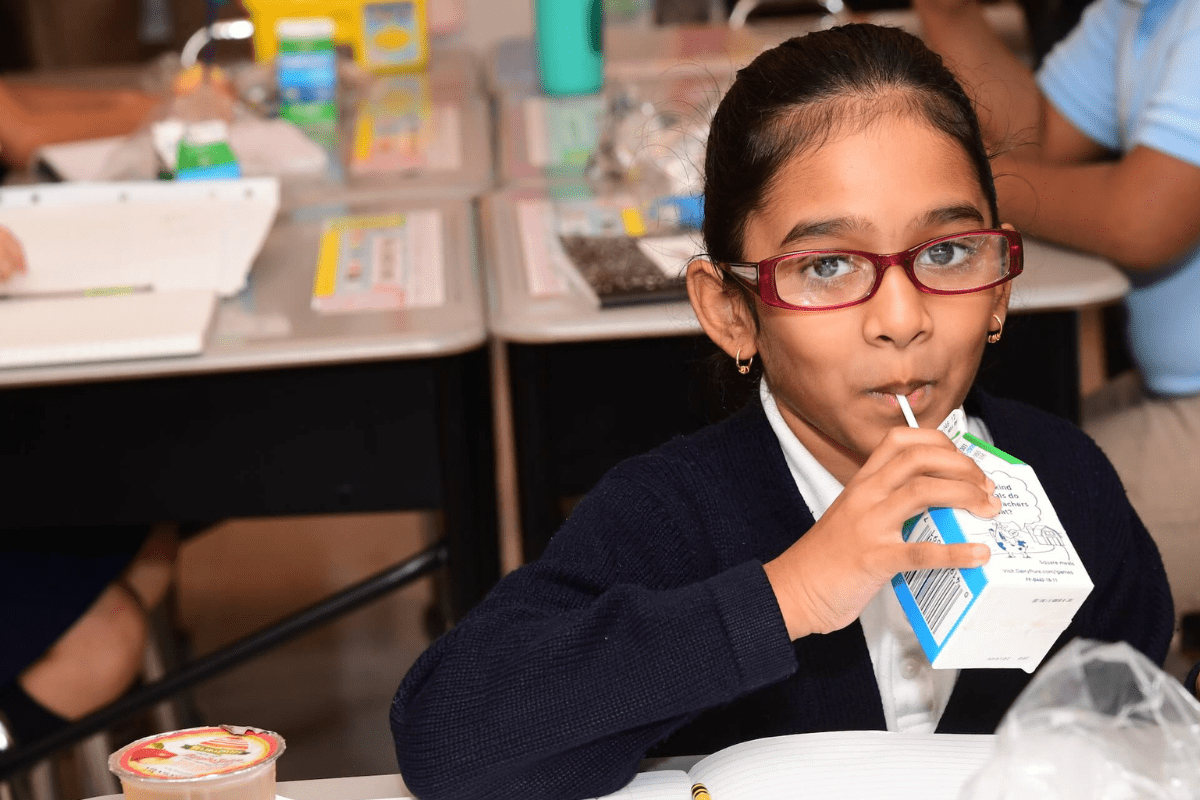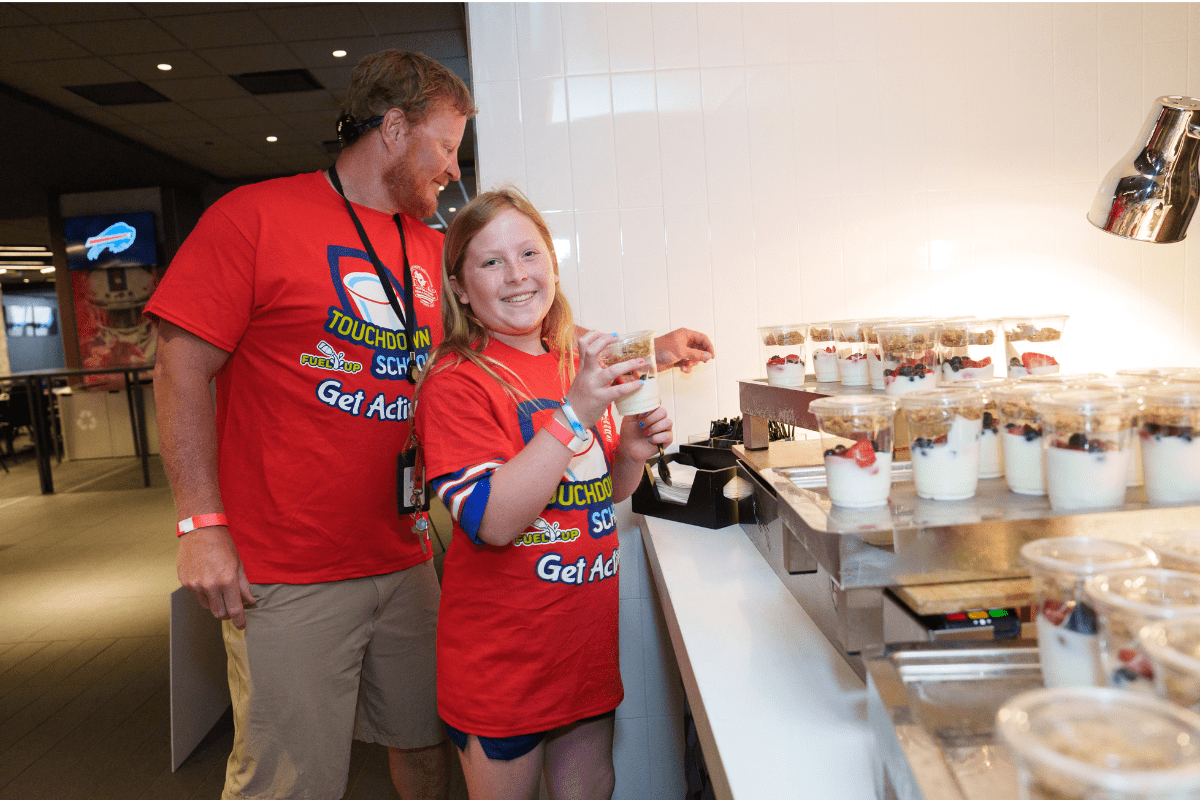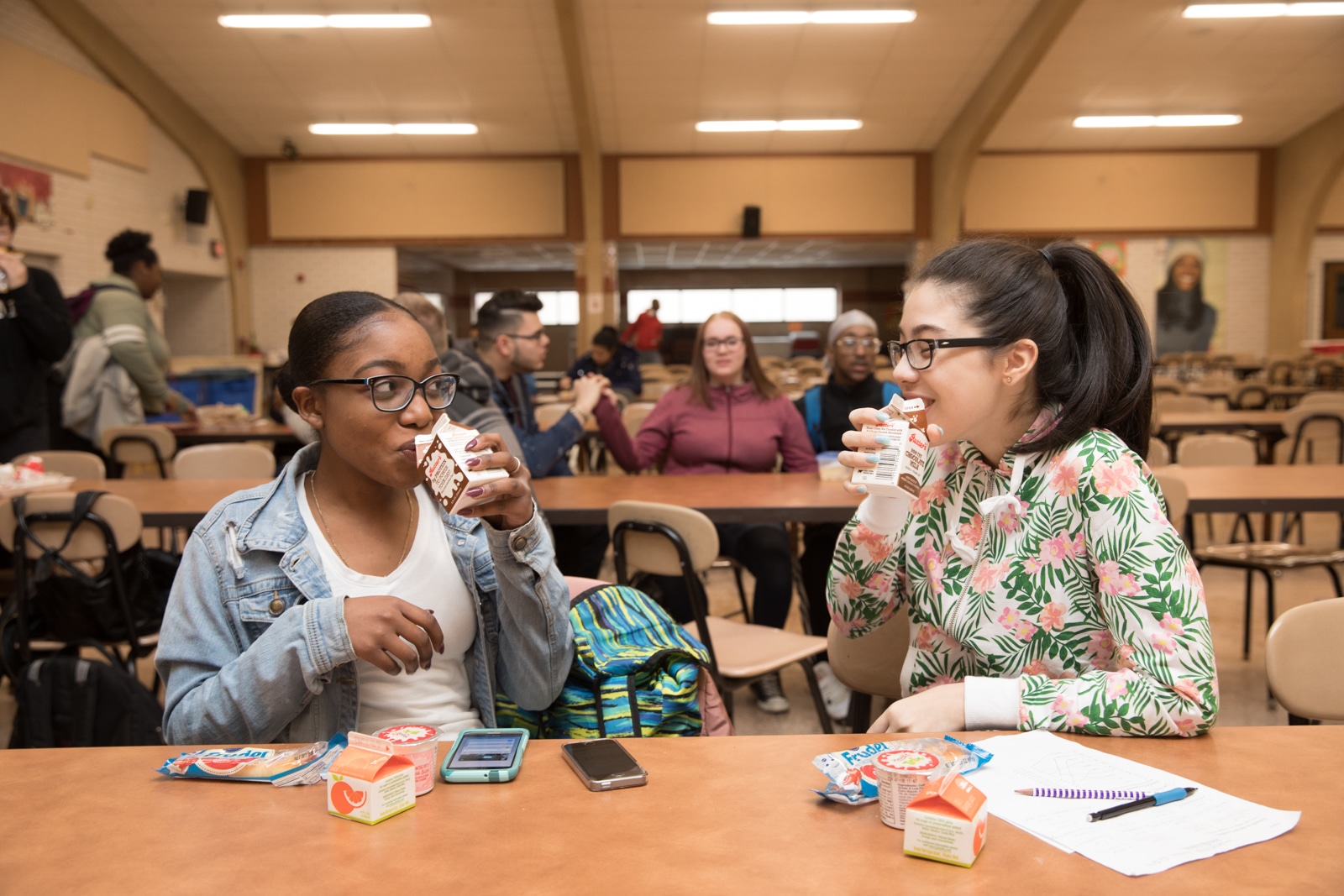School Breakfast Program
The School Breakfast Program (SBP) provides reimbursement to states to operate nonprofit breakfast programs in schools and residential childcare institutions. The Food and Nutrition Service administers the SBP at the federal level. State education agencies administer the SBP at the state level, and local school food authorities operate the program in schools.
National School Lunch Program
School lunch is an ever-evolving program in the U.S. – one that gets better each year! Did you know many schools in our region now offer salad bars and fresh, from-scratch meals? School meals are required to serve milk with each meal. Choices to offer are 1% or fat-free white, and 1% or fat-free flavored milk. The required serving size is 8 fluid ounces.
Your school nutrition team works hard every day to make sure students are served healthy, balanced meals that meet USDA requirements.

Breakfast After the Bell
Breakfast after the bell allows all students equal access to breakfast and ensures everyone is ready to learn.
Breakfast after the Bell is a service delivery model where students eat breakfast in their classroom after the official start of the school day. Students or staff may deliver breakfasts to classrooms from the cafeteria via coolers or insulated rolling bags, or school nutrition staff can serve breakfast from mobile carts in the hallways.
Breakfast in the Classroom typically takes 10 – 15 minutes and can happen during morning tasks such as attendance or it can be integrated with other instructional activities. Some schools encourage teachers to participate in the program and eat with their students.
Grab n’ Go
Grab n’ Go is a flexible service model where students pick up packaged breakfasts from mobile carts. They can eat in the cafeteria, classroom, or elsewhere on school grounds. This model is popular in middle and high schools due to its convenience and ability to fit varying schedules.

Second Chance Breakfast
Second Chance Breakfast is a meal service where students eat breakfast, often after the first period. It’s similar to Grab n’ Go and is effective for older students who aren’t hungry early or prefer socializing. It may also be called Breakfast After First Period, School Brunch, or Mid-Morning Nutrition Break.
82% of schools that adopt Breakfast After the Bell see increased meal participation.
This is because serving breakfast during the school day eliminates stigma and improves access for everyone.
School Meal Vending
Breakfast Vending allows students to access breakfast foods though vending machines. This model is most often implemented in high schools and vending machines are usually only available prior to the start of the school day.The American Dairy Association North East proudly supports programs aimed to improve the health of children in schools with dairy and nutrition education.

